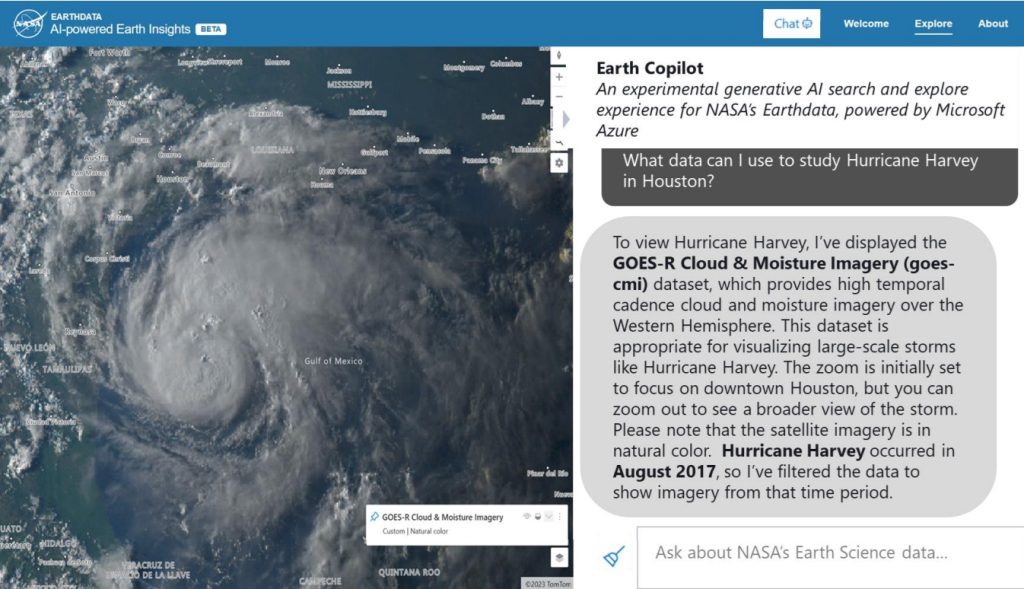Microsoft and NASA have teamed up to develop Earth Copilot, a software tool that uses artificial intelligence and cloud computing to simplify the process of searching and analyzing Earth science data. This collaboration is part of NASA’s Transform to Open Science Initiative, which aims to make over 100 petabytes of satellite imagery and other Earth science data more accessible to scientists, educators, policymakers, and the general public. The goal is to democratize access to spaceborne information by enabling users to interact with the data through simple, plain language queries.
Earth Copilot allows users to interact conversationally with NASA’s data repository, making it easier to find the right information from the vast amount of data gathered by NASA’s Earth Science Data Systems Program. Users can ask questions in plain language, such as “What was the impact of Hurricane Ian in Sanibel Island?” or “How did the COVID-19 pandemic affect air quality in the U.S.?” AI technology retrieves relevant datasets, streamlining the process and making it intuitive, without requiring users to navigate technical interfaces or understand geospatial analysis intricacies.
The project utilizes Microsoft’s Azure cloud platform and the customizable capabilities of Azure OpenAI Service. This AI prototype is powered by Azure’s suite of services, including machine learning, data analytics, and scalable cloud infrastructure. It is designed to efficiently handle complex queries and large datasets, allowing users to quickly find the information they need without being overwhelmed by technical complexities. The goal is to create a seamless, scalable solution that can evolve as NASA’s data, tools, and applications continue to grow.
Earth Copilot is currently being tested by NASA researchers to explore its capabilities. Once the platform is evaluated and fine-tuned, the NASA IMPACT team will consider incorporating it into their Visualization, Exploration, and Data Analysis Project, known as VEDA. The collaboration between Microsoft and NASA aims to bring Earth’s insights to underserved communities, enabling tangible improvements by providing easier access to valuable Earth science data. By leveraging AI and cloud technologies, the project is making it easier for users to interact with and make sense of complex Earth science data.
Minh Nguyen, a Cloud Solution Architect at Microsoft, highlighted the vision behind the collaboration, emphasizing the goal of leveraging AI and cloud technologies to bring Earth’s insights to communities that have been underserved. Tyler Bryson, Microsoft’s corporate vice president for U.S. health and public sector industries, explained that Earth Copilot simplifies the process of accessing NASA’s data repository by allowing users to interact conversationally with the data. By enabling users to ask questions in plain language, the project aims to democratize access to spaceborne information, making it more accessible and intuitive for a wider audience.
Overall, the collaboration between Microsoft and NASA on Earth Copilot represents a significant step forward in making Earth science data more accessible and easier to analyze. By leveraging AI and cloud technologies, the project aims to simplify the process of searching for and retrieving relevant Earth science data, making it easier for scientists, educators, policymakers, and the general public to access valuable information. As the project continues to evolve and be integrated into NASA’s data analysis projects, it has the potential to revolutionize the way Earth science data is used and understood, ultimately leading to new insights and discoveries.












